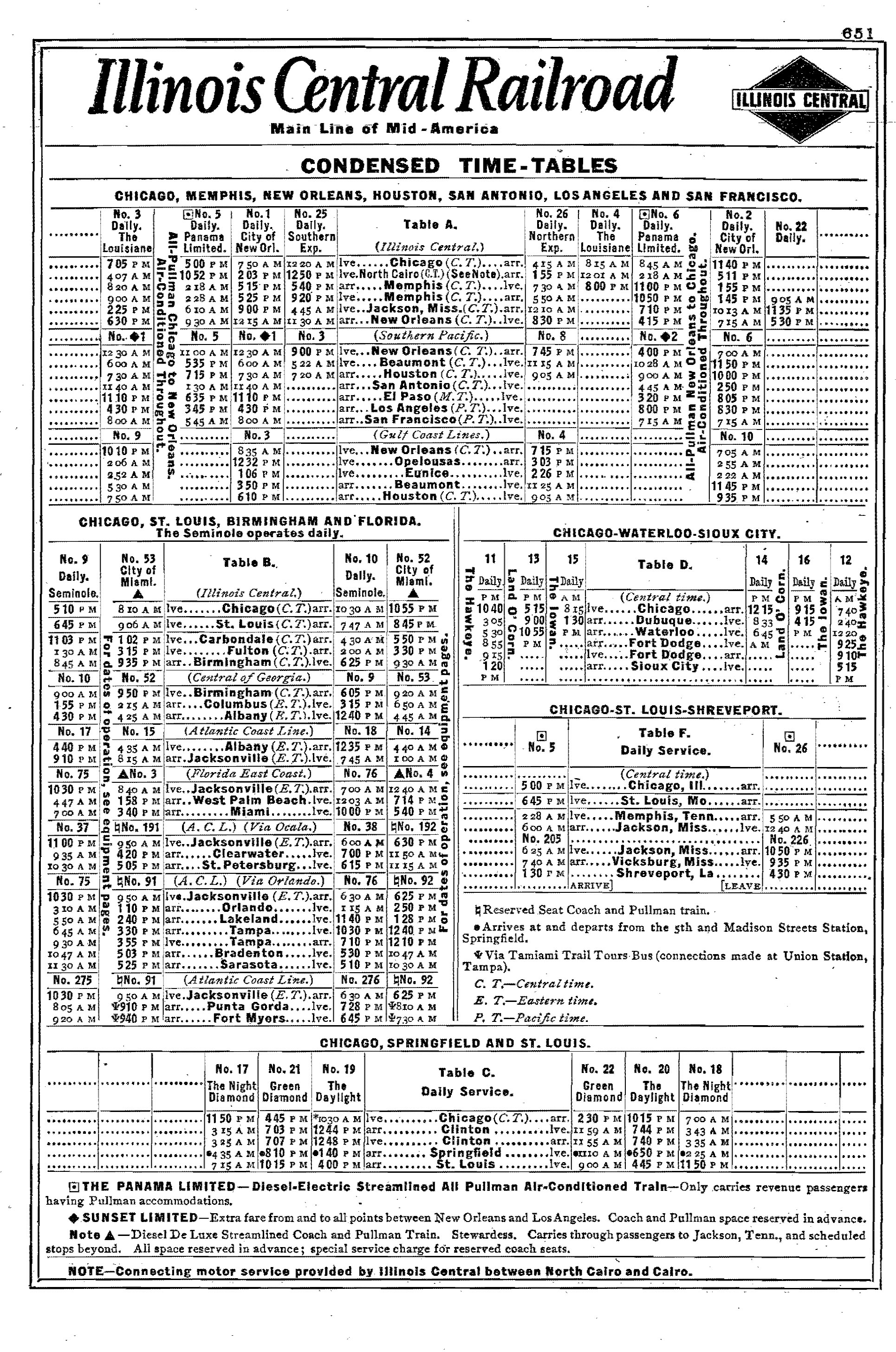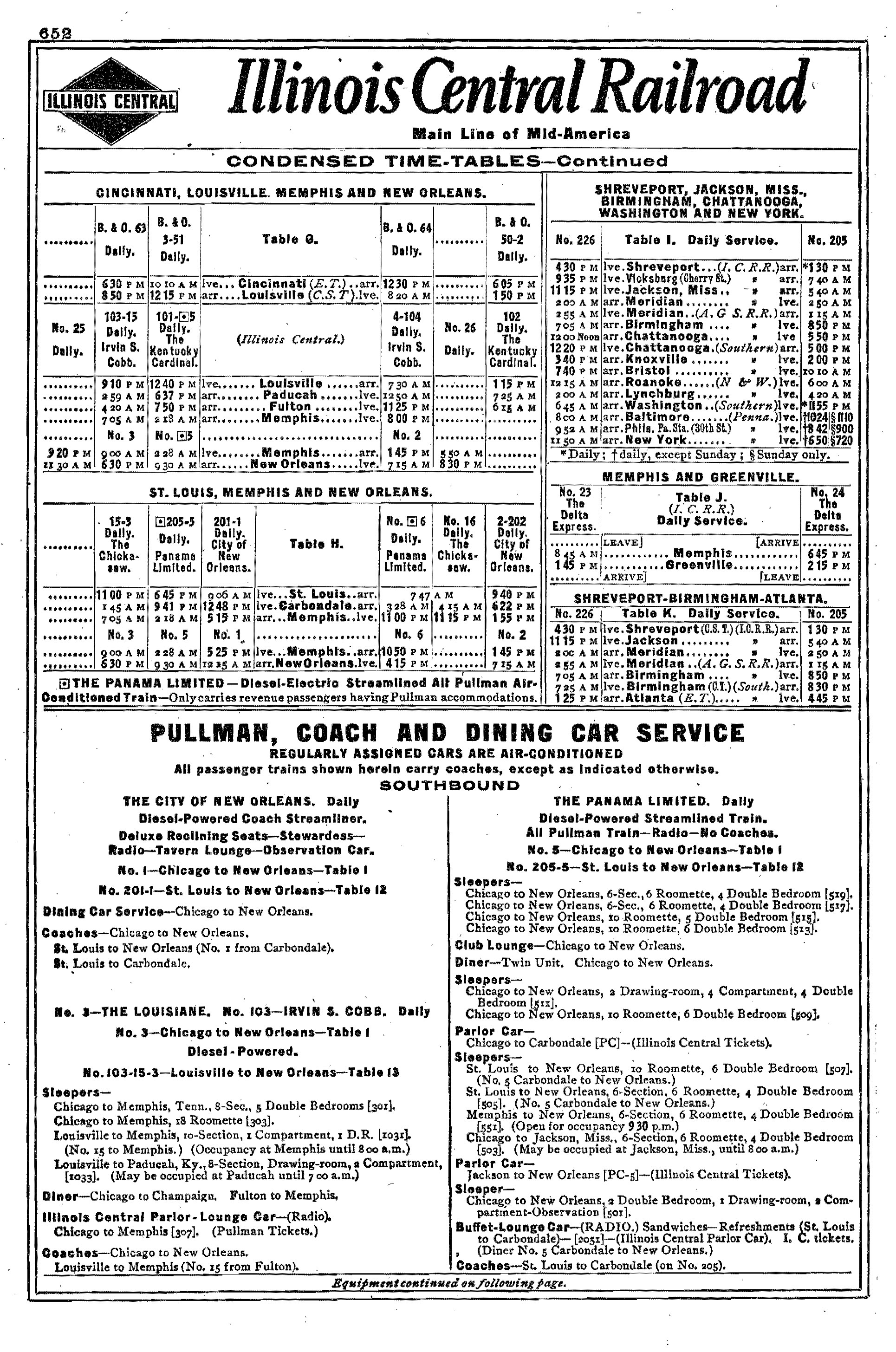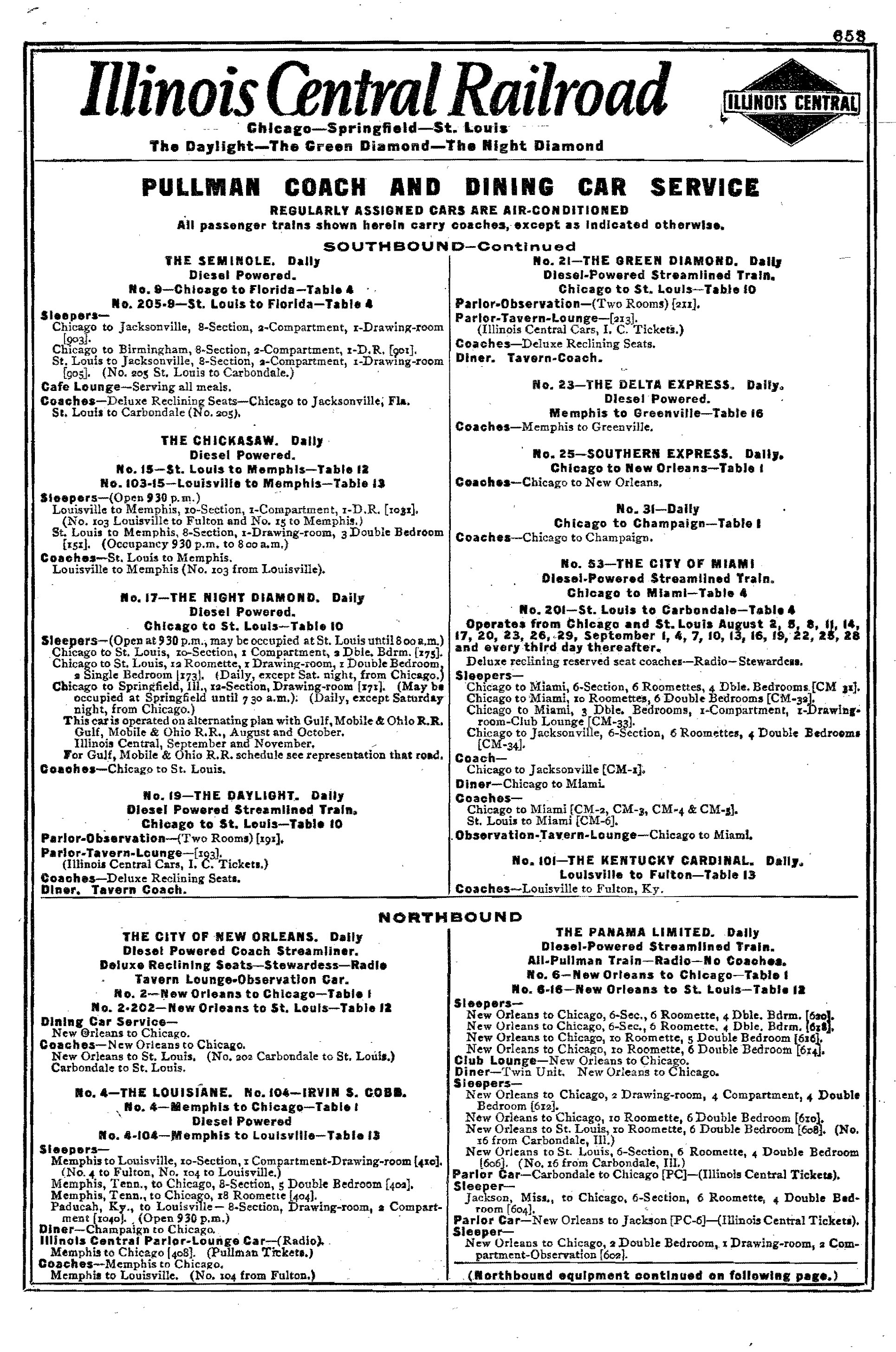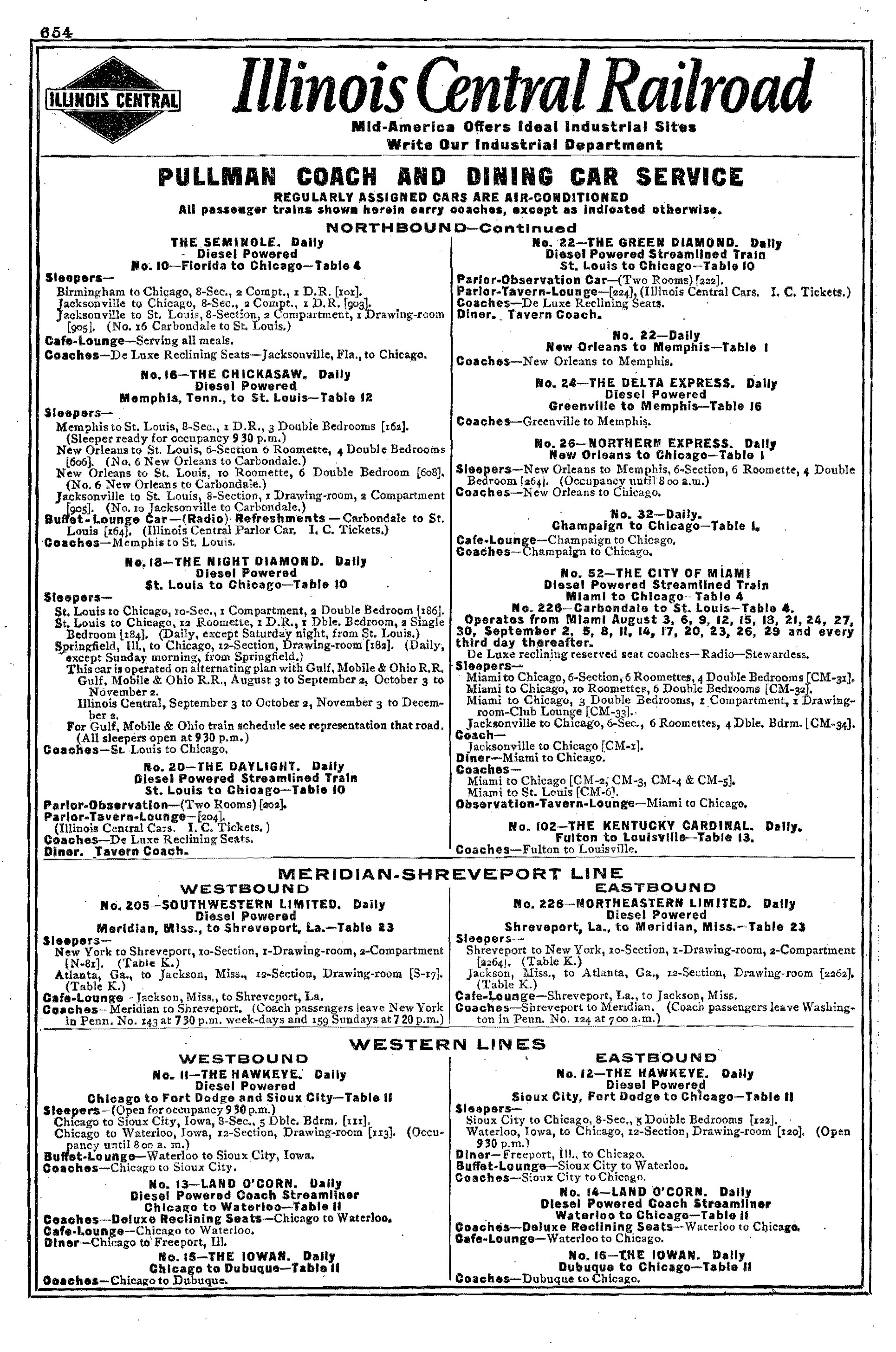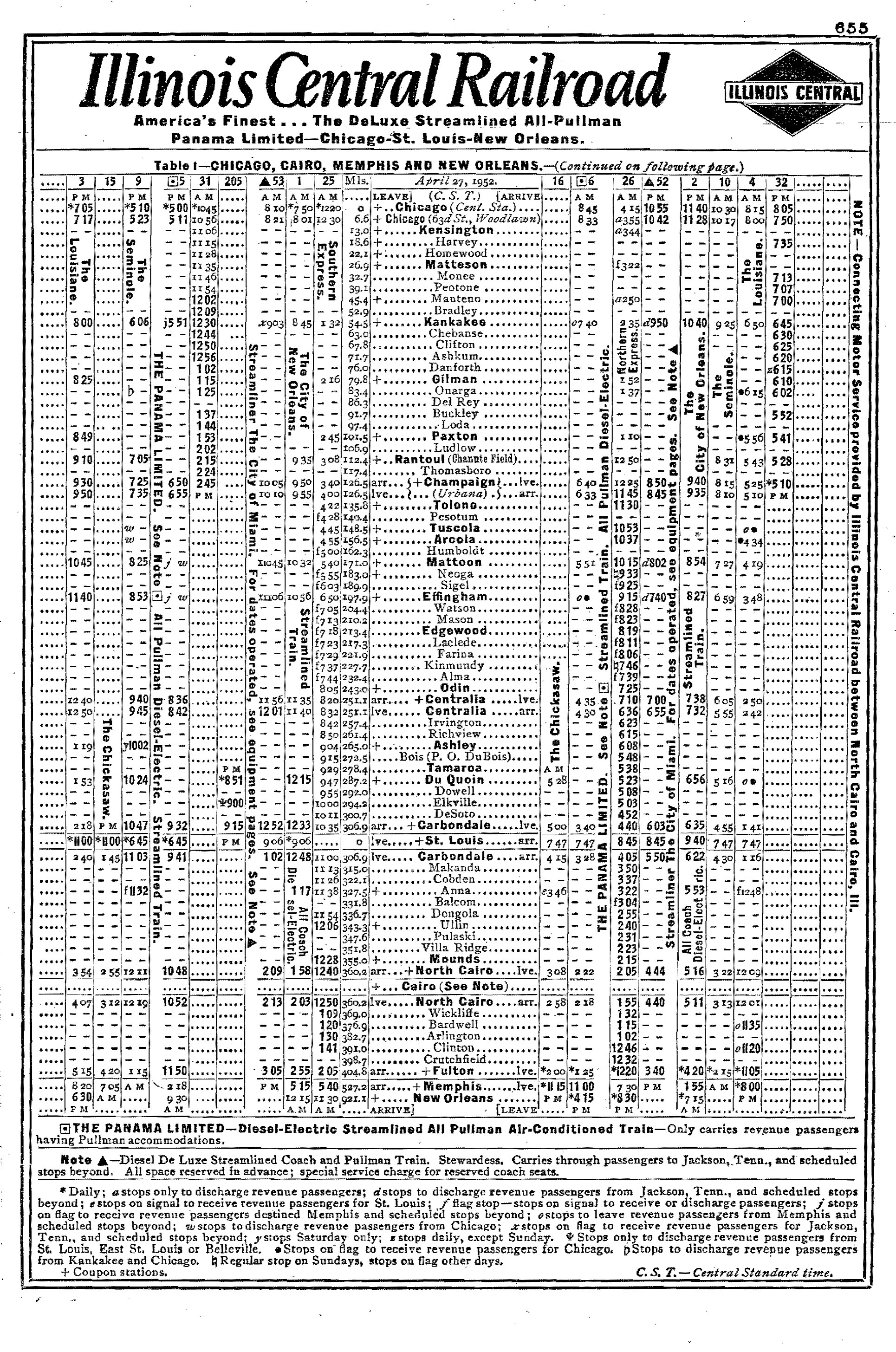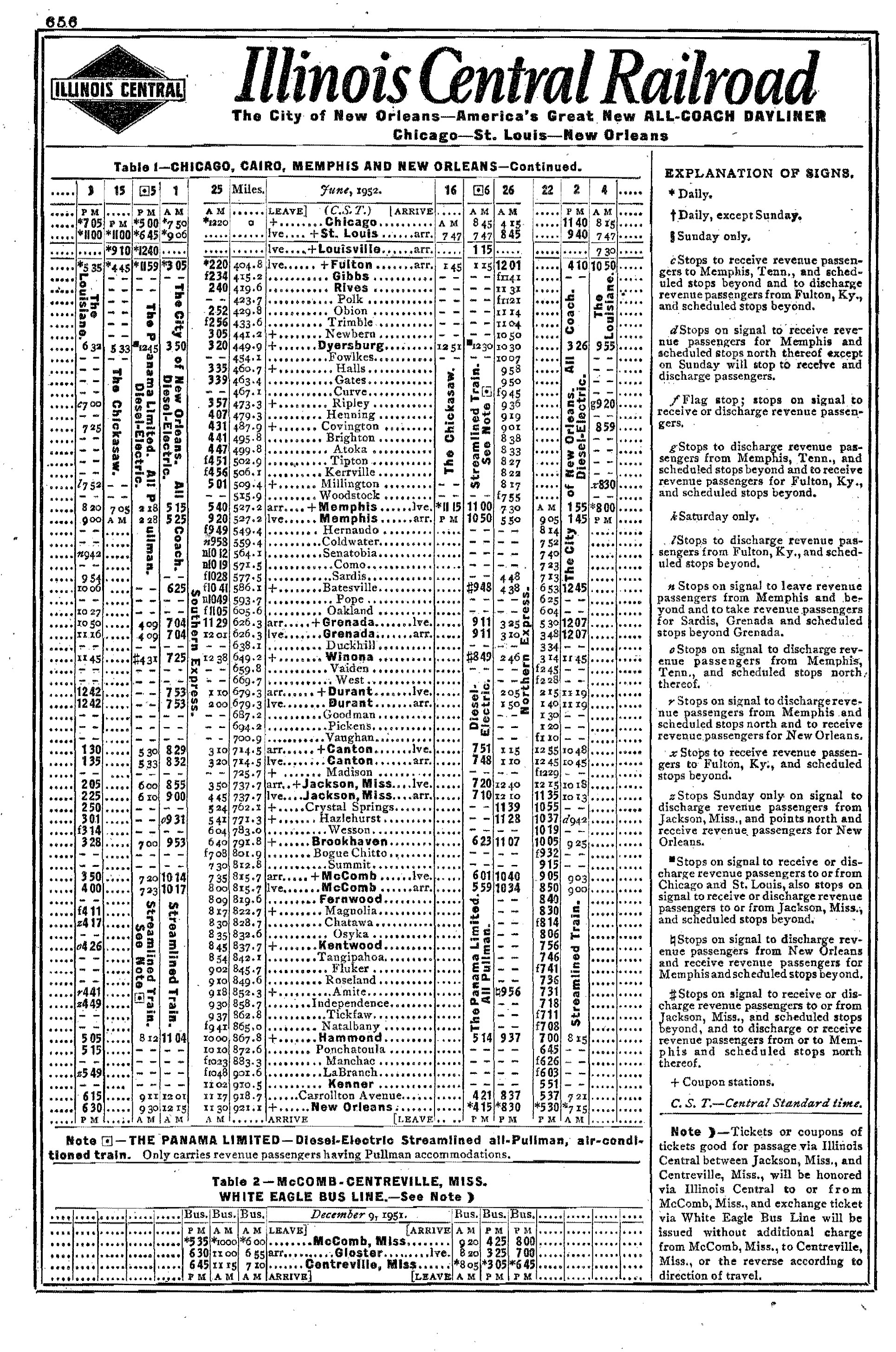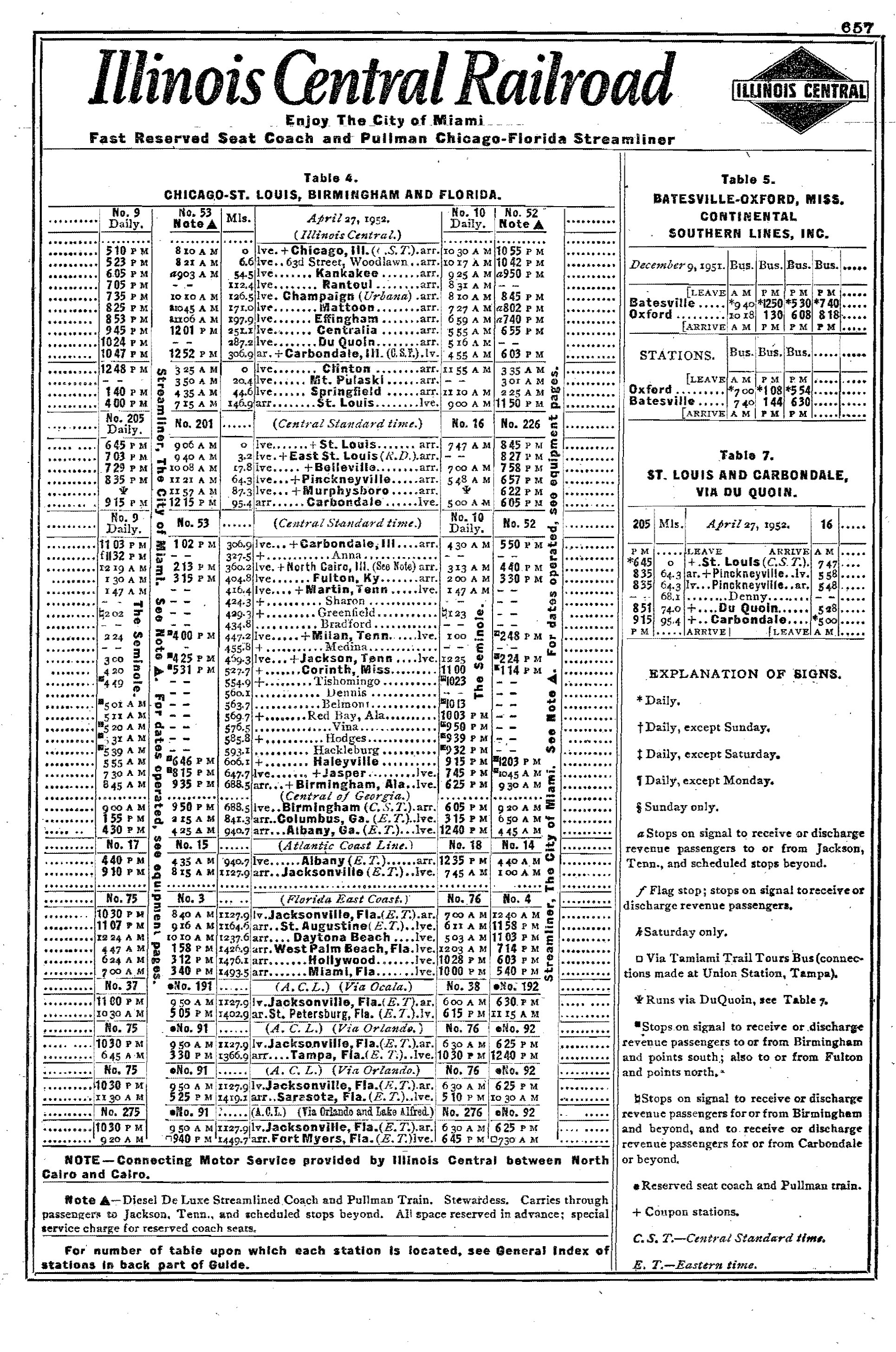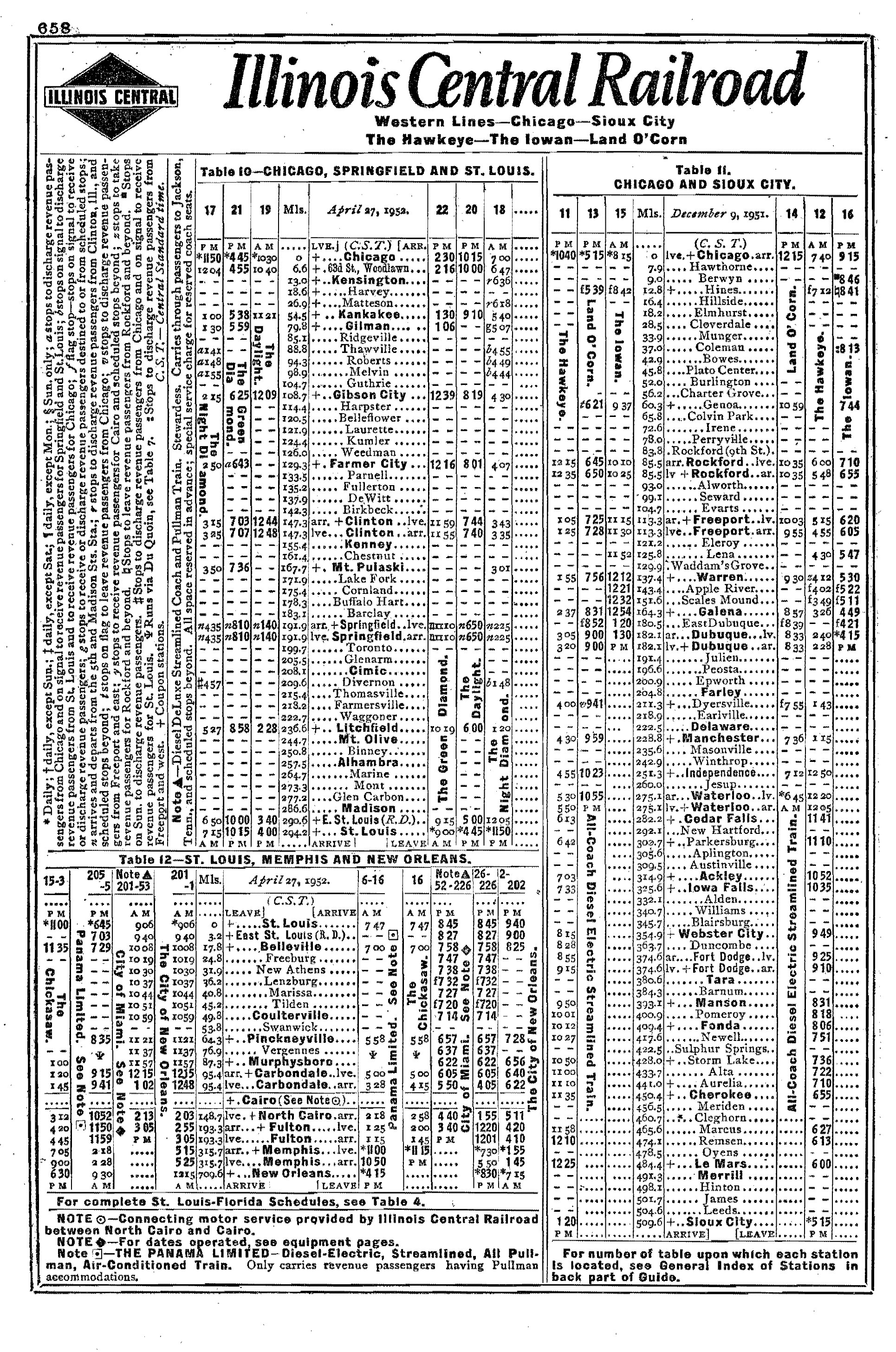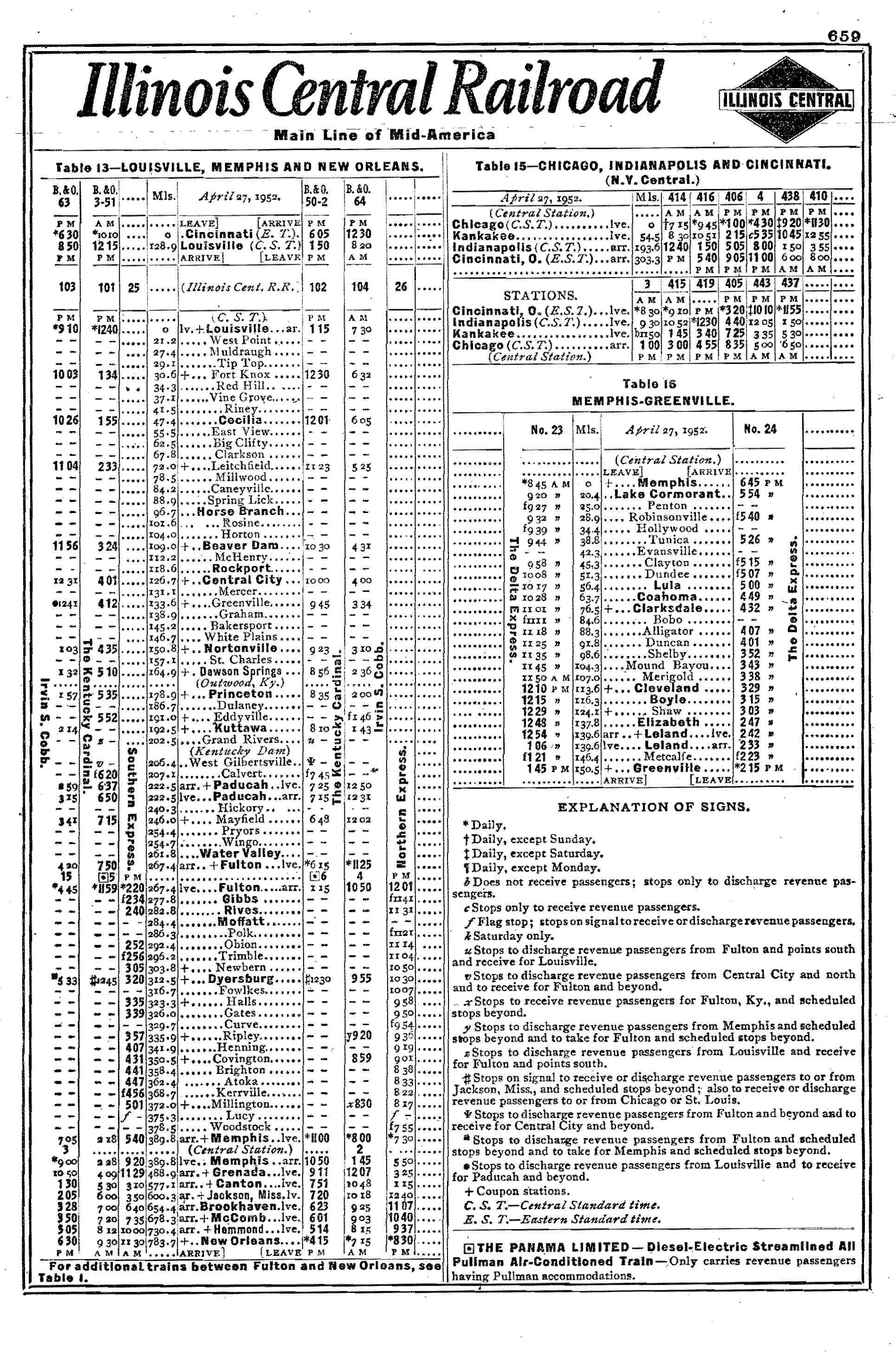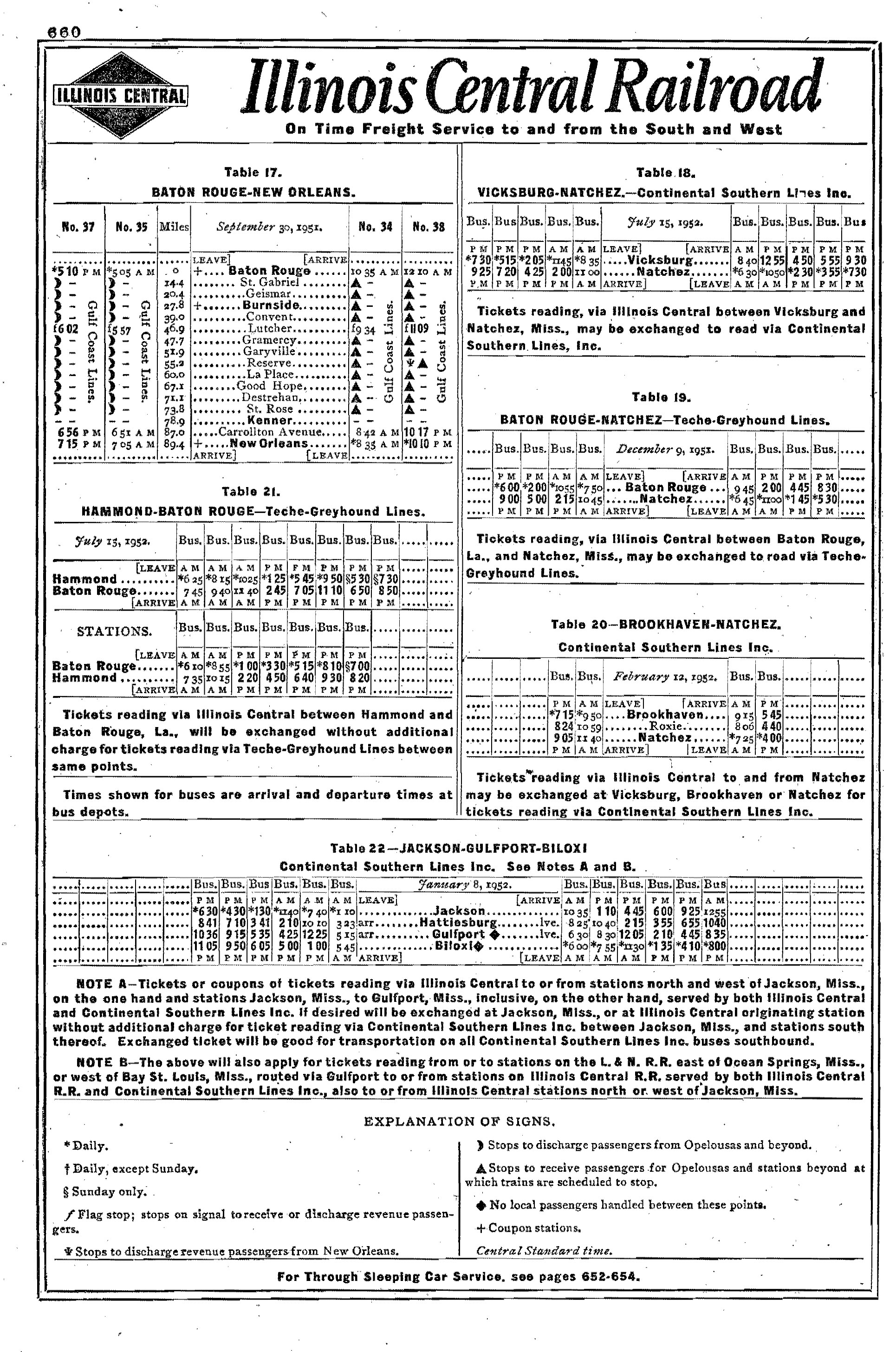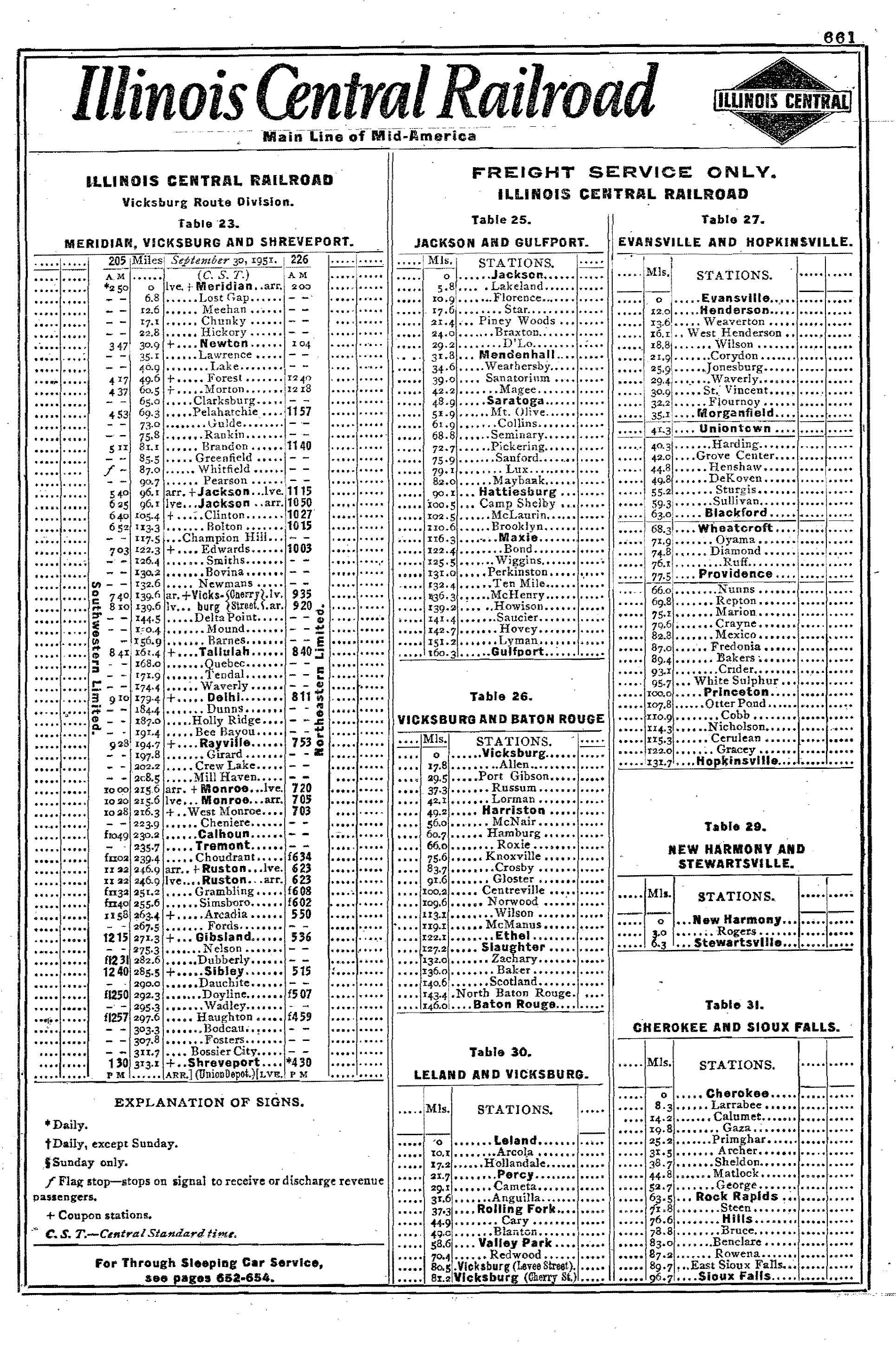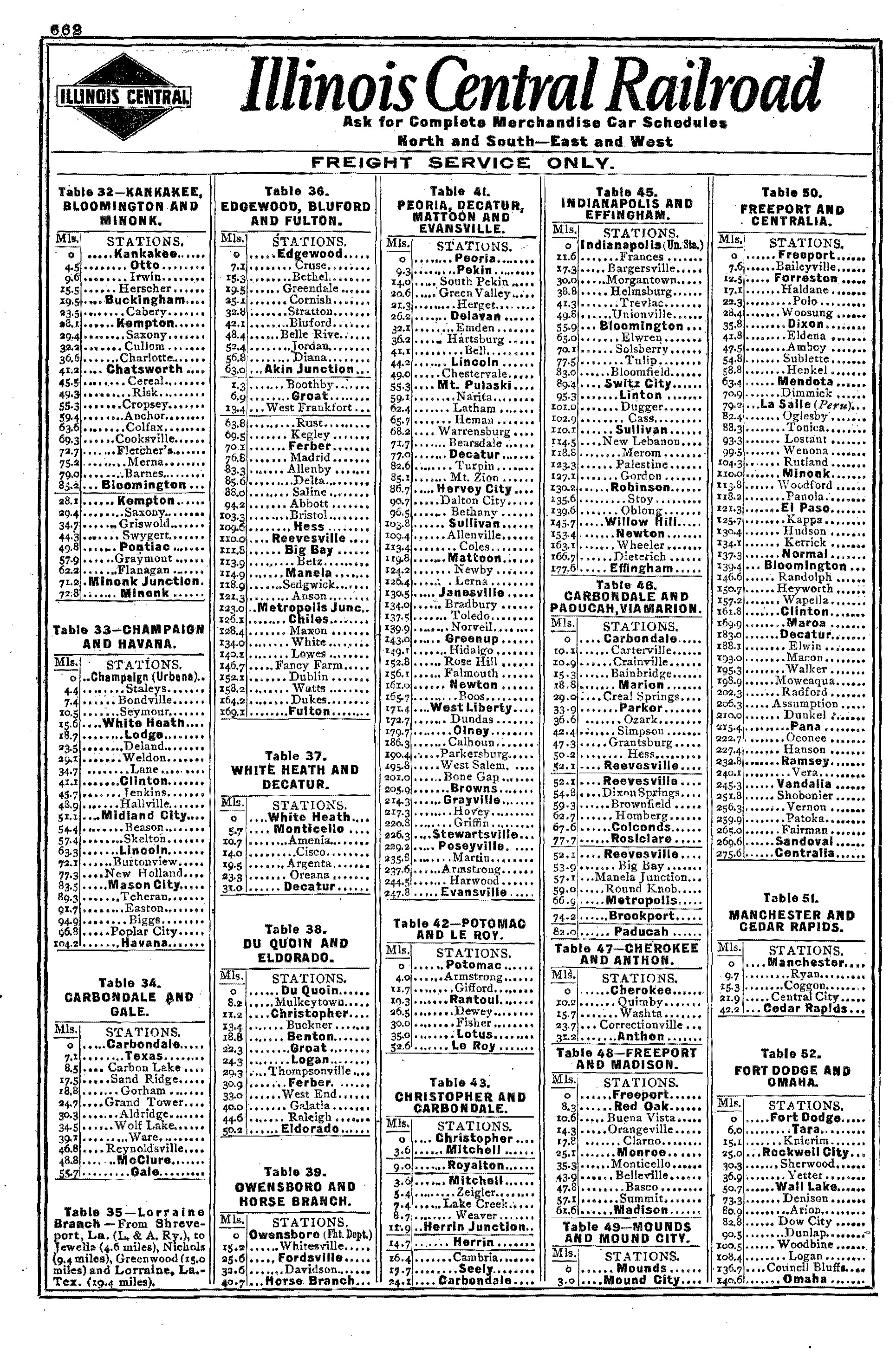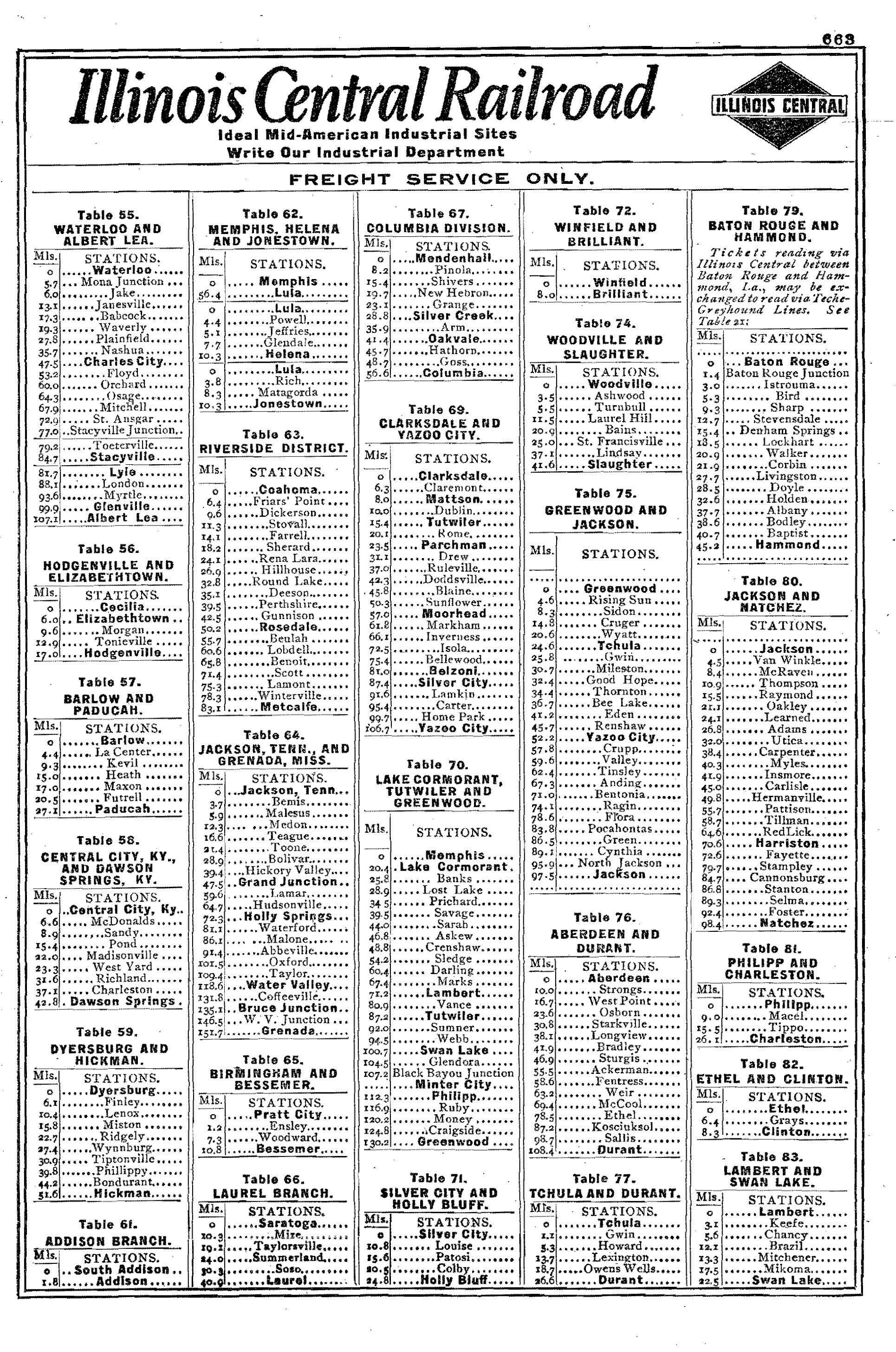Illinois Central Timetables (1952)
Published: October 11, 2023
By: Adam Burns
The Illinois Central represented one of the only north-to-south routings in the U.S., operating a network in 1930 that total over 7,000 miles from Chicago to New Orleans.
Its slogan "Main Line Of Mid-America" was a perfect description of a major American railroad operating an unconventional system when nearly all others ran east-to-west. Its one noteworthy competitor was the smaller Gulf, Mobile & Ohio which also connected Chicago and New Orleans.
The IC's public timetables in the "Official Guide Of The Railways" were modest but covered all of the railroad's notable trains - such as the City of New Orleans and Panama Limited - as well as secondary trains like the Land O'Corn, Seminole, and Hawkeye.
The below covers the IC's August, 1952 listing in the "Official Guide".
1952 "Official Guide" Listing
History
Our journey through history begins with the birth of the Illinois Central Railroad (IC), incorporated in 1851. It was the vision of Robert Schuyler, a New York businessman, who aimed at generating a north-south transport route, fostering an economic boom and easing the movement of people and goods across the growing nation.
Early on, the Illinois Central was destined to become a prominent force in American transport. It spanned across significant states like Illinois, Iowa, Missouri, Wisconsin, and Kentucky. Major cities like Chicago, New Orleans, Omaha were all connected via this pivotal rail network.
The Illinois Central Railroad's total mileage was impressive. At its peak, it operated a network of approximately 6,721 miles, one of the largest rail networks of its time, connecting various agricultural and industrial hubs and transforming the economic landscape of the Midwest.
The foremost purpose behind its construction was to establish a comprehensive transport route to ease the movement of agricultural and industrial goods. IC was key in connecting the cotton fields of the south with the rapidly industrializing north, facilitating trade and supporting the burgeoning economy of the time.
It didn't take long for the IC to embark on a course of growth and expansion. The Illinois Central Railroad absorbed several smaller railways, thereby broadening its network. The Yazoo and Mississippi Valley Railroad was among the notable companies integrated into the IC framework.
A significant turning point for IC was in 1972 when it merged with the Gulf, Mobile & Ohio Railroad. The merger, the first major one to be approved under the U.S. Transportation Act of 1920, sought to increase the competitiveness of the railroad industry, especially in comparison to burgeoning highway and air transport sectors.
The evolving landscape of the transportation industry eventually led to the acquisition of Illinois Central by the Canadian National Railway in 1998. This acquisition was integral to increasing the transport capabilities of the Canadian National Railway, particularly in regards to north-south freight service within North America.
The IC's history was filled with notable figures who contributed to the railroad's growth and development, such as William P. Burr, the railroad's first president. Burr was instrumental in laying the groundwork for what the IC would become, guiding its initial years and setting the pace for its development.
Throughout the decades, Illinois Central played a significant role in the transportation of numerous commodities. It carried grain, livestock, coal, lumber, and other goods. This economic boost was further boosted during wartime when the IC offered reliable, logistical support, transporting troops and supplies.
The IC also had a reputation for implementing innovative strategies. Notably, in 1883, it introduced a "fast freight" line, where trains moved at unusually high speeds for the time, allowing fresh meat to be carried from Midwest farms to the markets of the Northeast.
The Illinois Central was also known for its service to passengers. From operating prestigious, long-distance passenger trains, such as the famous City of New Orleans, to providing the crucial local service for commuters in the Chicago area - IC demonstrated a commitment to the needs of its traveling public.
Over time, the passenger services of the IC began to decline. A significant trend during the mid-20th century was the increased usage of automobiles and commercial aviation, which posed severe competitive challenges for the rail industry.
These factors have led to declining profits and an increased focus on freight services. In an attempt to combat these challenges, IC — similar to other major railroads — undertook initiatives to streamline its operations, modernize its fleet, and improve its services.
By the time of the 1972 merger with Gulf, Mobile & Ohio, the Illinois Central had moved through a century of growth, adaptation, and resilience. The newly formed Illinois Central Gulf hoped to leverage the combined strengths of the two entities to better compete in an ever-evolving transportation landscape.
The post-merger years, however, weren't without challenges. The IC grappled with a cumbersome infrastructure, inherited redundancy, and mounting debts. Nonetheless, the combined entity undertook significant restructuring efforts to revive its fortunes.
The acquisition by Canadian National Railway in 1998 marked a new era for the IC. The merger extended CN’s network further, taking advantage of the strategic positioning of IC's lines, to create a formidable rail system that expanded from coast to coast across North America.
Today, the legacy of the Illinois Central survives through its enduring imprint on the American landscape. Cities continue to thrive along its tracks, and its infrastructure continues to support freight movement across the continent.
It is also preserved in various museums and heritage sites. Among them is the Monticello Railway Museum in Illinois, where several pieces of IC equipment, including diesel locomotives and passenger cars, have been preserved for historical reference.
The Illinois Central also finds a place in music. The IC's "City of New Orleans", one of the longest continuous passenger trains in the United States, has been immortalized in a folk song by Steve Goodman.
Undeniably, the Illinois Central was a critical player in American railroad history. Its progressive thinking, ambitious efforts, and innovative strategies defined its operations and left an enduring mark on the transportation industry, even after its merger with the Gulf, Mobile & Ohio Railroad and subsequent acquisition by the Canadian National Railway.
The story of the IC provides lessons in resilience, adaptability, and growth. From shaping the sociocultural fabric of America to weathering transitions and challenges, the Illinois Central Railroad's presence has been instrumental in moulding the American transportation landscape.
Hence, the century-long legacy of the Illinois Central remains a significant chapter in American economic and industrial history. Despite shifts in transportation trends and external financial pressures, its enduring contribution to the growth and development of regions it served cannot be understated.
Recent Articles
-
Georges Creek Railway: Maintaining The Old WM
Jul 27, 24 12:38 AM
The Georges Creek Railway was a former Maryland short line operating 14 miles of the ex-Western Maryland/C&P near Westernport, MD. Service lasted from 2007-2019. -
The "Lone Star": Amtrak's Former "Texas Chief" Route
Jul 26, 24 11:52 PM
The "Lone Star" was Amtrak's renamed "Texas Chief" after the Santa Fe demanded the carrier stop using the "Chief" name due to declining service. It operated from 1974-1979. -
Union Railroad Company: Serving Pittsburgh's Steel Mills
Jul 26, 24 10:12 PM
The Union Railroad Company is a historic short line/industrial system that has served Pittsburgh's steel industry since 1896.
